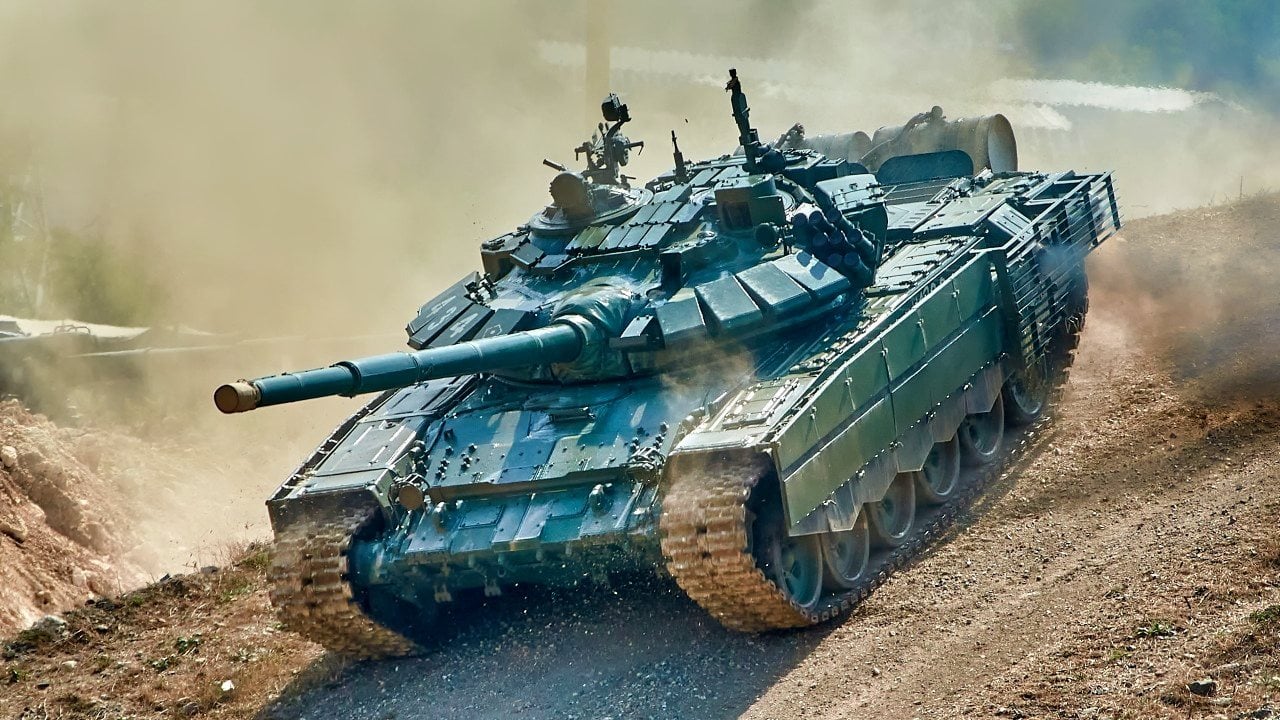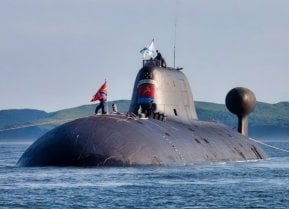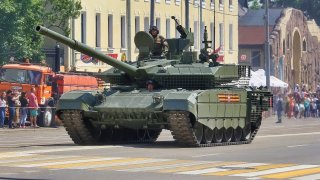T-90 Tank: A Nightmare for Russia on the Battlefield?
The T-90 tank, developed during the late Soviet era, was designed to be a substantial upgrade over older models like the T-72 and T-80, featuring advanced composite and reactive armor, the Shtora-1 countermeasures suite, and a 125mm smoothbore gun with a modern fire-control system.
Summary: The T-90 tank, developed during the late Soviet era, was designed to be a substantial upgrade over older models like the T-72 and T-80, featuring advanced composite and reactive armor, the Shtora-1 countermeasures suite, and a 125mm smoothbore gun with a modern fire-control system.
-Despite its technological advancements, the T-90 has faced criticism in modern conflicts from Chechnya to Syria and Ukraine, where its vulnerabilities, especially against modern anti-tank systems and drones, have been exposed.
-While it represented a significant step forward in Russian military technology, the changing nature of warfare and technological advancements by other nations have challenged its effectiveness, signaling a potential phase-out in favor of more modern systems like the T-14 Armata.
The T-90 Tank: A Soviet-Era Marvel Facing Modern Warfare Challenges
The T-90 was developed in the final years of the Soviet Union. It was meant to simplify the Soviet Red Army’s logistical burden of maintaining multiple variants of tanks. While appearing similar to other Soviet-era tanks, like the T-72 and T-80, the T-90 was supposed to be a significant upgrade for the Russian forces. Despite their outward similarities in appearance, though, the T-90 was a superior tank to these other, older Soviet-era models.
For example, the T-90 had a newer composite armor than did the other Soviet tanks of its time. The T-90 enjoyed further protection from explosive reactive armor to defeat incoming missiles. Meanwhile, the T-90’s Shtora-1 countermeasures suite could deploy infrared dazzlers, automatic smoke dispensers, and a laser warning system in case a missile was inbound.
The T-90 possessed a 125mm smoothbore tank gun that was augmented by what was then a next-generation fire-control system. According to the design specifications of the T-90, thanks to the onboard infrared systems, the tank could engage enemy targets as far away as 8,000 meters.
The T-90M was a great tank for its generation. But, the face—and technologies—of modern warfare has changed significantly since the Soviets designed the T-90.
T-90 War Record
The Russian T-90 tank has participated in some of the severest conflicts in the modern age. From Chechnya to Syria’s Civil War, these tanks have seen combat. Yet, claims of their superiority by the Russians are often challenged by those forces that went up against the T-90. Both Chechen fighters from the Russian conflict in Chechnya as well as anti-Bashar Assad forces from the Syrian Civil War insist that the T-90s were basically easy targets for Rocket Propelled Grenades (RPG).
The Russians, on the other hand, argue that, despite being hit repeatedly by RPG rounds, the tanks kept fighting.
In the Ukraine War, though, the world has been given a clearer perspective on the T-90 tank.
The Changing Face of War
While many accuse the T-90 of being a failure, it is important to remember just how drastically the capabilities of other countries have evolved. Unmanned aerial vehicles (UAV), or drones, have given the Ukrainian Army a significant capability to challenge the tank supremacy that Russia entered the war with.
As Maya Carlin reported earlier this year in this pages, “Loitering munitions such as the Lancet as well as top-attack anti-tank guided munitions such as the U.S.-made Javelin have so far proved effective against the Shtora defense system.”
It's easy to mock the T-90. But the context is king. These tanks were designed to wage war in a bygone era. Now, the wars most countries are waging are more urban, tighter quarters, and usually quite asymmetrical. Plus, Russia’s entire doctrine of tank warfare is a holdover from the Soviet era.
While it’s true, the T-90 has not performed as well as Russian war planners had hoped for. That’s less a fault of the tank and more a sign of the changing times—coupled with Russia’s inability to change with those times.
Warfare can either make or break a nation; it can either enhance a military’s martial prowess or destroy it. The Russians have been evolving their doctrine and technology since they illegally invaded Ukraine in 2022. Initially, the Ukrainians were innovating as well. But now, as time has progressed, the situation has flipped and Russia, despite its follies with the T-90 tank is poised to win the war.

As for the T-90 tank, its days as a main battle tank are coming to a close when the war is over. Russia is seeking to expand its expensive T-14 Armata tank. The Ukraine War has shown Russia that it must take seriously the modernization of its military. Still, from a technical standpoint, the T-90 is not a bad tank. It’s just not as relevant as it once was to Russian military units engaged in intense fighting in the Ukraine.
About the Author
Brandon J. Weichert, a National Interest national security analyst, is a former Congressional staffer and geopolitical analyst who is a contributor at The Washington Times, the Asia Times, and The-Pipeline. He is the author of Winning Space: How America Remains a Superpower, Biohacked: China’s Race to Control Life, and The Shadow War: Iran’s Quest for Supremacy. His next book, A Disaster of Our Own Making: How the West Lost Ukraine, is due October 22 from Encounter Books. Weichert can be followed via Twitter @WeTheBrandon.


